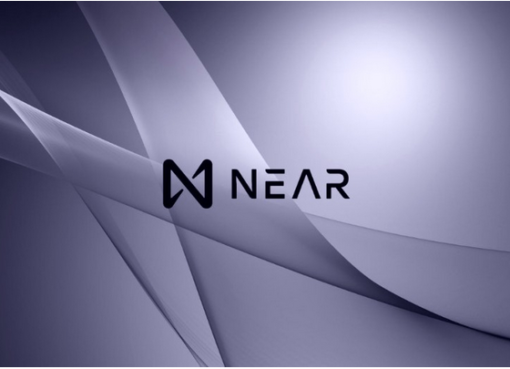Alongside the ultimate scalability and security for the Ethereum network, the upcoming Ethereum 2.0 upgrade to a proof-of-stake model promises to bring additional, new benefits to its users, too. One of the main attractions, which encourages buying Ether (ETH), is a staking model that allows receiving passive income for the validation of transactions. And here, the users are able to choose between two different options: The first implies depositing 32 ETH and running a validator node software, and the second allows for staking without having to deposit or run nodes by joining third-parties’ pools.
The numbers speak for themselves, as 66% of the Ethereum community are proponents of staking with the remaining still unsure of their choice. With promising benefits, however, the new upgrade can bring some risks, too. How will the new staking model affect those who choose to stake, hold or trade, and what can the negative scenarios be for those who decide to keep mining with the old network?
In with the benefits
Most experts believe that the upgrade to Ethereum 2.0 will have a positive impact on the price of ETH and its trading volumes. Staking can indeed open up wide investment prospects for those who prefer the buy-and-hold strategy instead of trading ETH futures. According to Changpeng Zhao, the CEO of Binance, staking will help stabilize cryptocurrency prices, as it encourages users to make market purchases and set limit sell orders.
Another expected benefit is that the launch of the update will reduce costs and speed up network transactions at the expense of a drop in the cost of gas. Speaking about positive changes that Ethereum 2.0 can bring to the market, Praneeth Srikanti, the investment principal at ConsenSys Ventures, told Cryptox:
“Proof-of-stake comes with a number of improvements, including energy efficiency, lower barriers to entry, stronger crypto-economic incentives and greater reward-generating capabilities for a broader set of users. We also believe that there would be increased demand for ETH, as users would start to gain opportunities to find new staking reward-based-yields and contribute to the security of the chain and will present some interesting dynamics with the current utilization via locking up ETH assets in DeFi protocols.”
However, despite a number of advantages, the Ethereum 2.0 upgrade potentially carries the risk of significant negative consequences for the network’s users and stakeholders.
Stake hard or lose ETH
One sizable risk relates to high requirements for stakers and the need to freeze funds to be eligible to validate transactions. Staking rewards the participants and adds security to the network. However, there is a hidden element of risk, as the average user may not fully understand staking. Lack of understanding and the complexity of the model can lead to such problems as the theft or loss of withdrawal keys and undertaking incorrect procedures when transferring funds.
Another risk is connected to the actual transition from Ethereum 1.0 to Ethereum 2.0, which, once complete, will allow users to stake ETH and start receiving rewards on the new Ethereum 2.0 network. While being a simple and secure mechanism to move ETH to the new blockchain, this one-way transfer can impose the lock up risk. While being staked on the new PoS chain, ETH may suddenly drop in price, leaving users unable to sell their assets and making it impossible to mitigate losses. In a conversation with Cryptox, Eliézer Ndinga, a research associate at investment company 21Shares, said:
“The transition from the current Ethereum blockchain to Ethereum 2.0 requires users to transfer their ETH between blockchains, which could create risks for users who try to do this themselves, though exchanges and other custodians are likely to assist in this process.”
Using a third-party staking provider might be a solution. However, when participating in a staking pool, users need to understand that someone else may access their funds. Will McCormick, the director of communications at cryptocurrency exchange OKCoin, told Cryptox that while suggesting that users cannot trade with those funds, the lockup phenomenon has a positive side as well: “This gives further options to those who look to balance their risk between the expected returns on staking versus the expected returns on trading. By giving both options, it appeals to a wider set of investors/users.”
Potential expenses can exceed profit
Even seemingly negligible market fluctuations may affect the value of the staked asset and negate expected rewards. The Ethereum roadmap states that staking rewards may be as low as 1.56%, which, considering volatility, could result in considerable losses instead of returns.
There is also the case of when price volatility can also work in favor of the staker, but it is important to remember that in order to receive passive income for storing ETH, users must lock up their deposit. Unlocking takes up to 18 hours, and that period may be extended if many users request a return of tokens, as indicated in the project roadmap. Accordingly, if ETH starts to devalue, it will be impossible to sell instantly. Thus, there is a risk of losing part of the capital and all of the income received from staking.
Miners in deep
The transition to the PoS algorithm will change the approaches to mining, which is why most miners will likely leave the market. Given that ETH is the most popular coin for home mining, the impact will be palpable.
Related: ETH Miners Will Have Little Choice Once Ethereum 2.0 Launches With PoS
As a result, ETH miners will be left with the choice of either selling their equipment to start staking or switch to other networks and mine coins that are not planning any major shakeups in their protocols. But the reality is that most miners will most likely switch off, and the remaining market participants will start staking their assets.
Failure threats
Some users have been expressing concerns about possible failures during and after the 2.0 update, such as a network split, or a security breach due to a possible vulnerability in the code. However, the developers claim that any concerns of a split, decentralized application failures or participants refusing to make the transition are unfounded.
The compatibility of the Ethereum ecosystem and its versatility allow tokens from the original network to be burned and replaced with new ones from the updated chain. The essence of the technicalities is that DApps will remain in operation and will not experience any changes until they manually undergo the transition to 2.0. However, there is a threat that the upgrade may fail. For instance, Konstantin Kladko, a SKALE network developer argued:
“Unfortunately, there are fatal flaws in the way ETH2 staking ended up [being] implemented. When staking starts it is going to be a huge embarrassment, because there may be not enough money to start the network.”
He also added that Ethereum 2.0 is going to be less than Ethereum 1.0 because there is no way to transfer back, meaning that validators can lose 50% of their money once the transition is made. Replying to Kladko’s claim, Vitalik Buterin also assumed that stakers might be aware that they are betting on a successful transition and that early stakers will get a return to commensurate those higher risks.
Yet, there are some experts who believe that the risk of upgrade delay is more realistic than the risk of its failure. For instance, Lanre Ige, a research associate at 21Shares, told Cryptox:
“It’s unlikely that the Ethereum core developer team, or ecosystem, will altogether fail to upgrade the network given that the fundamental technological problems for the initial rollout (‘Phase 0’) seem to be solved. Rather, the latest risk is failure to deliver the network upgrade in a timely manner.”
Beware of scammers and hackers
As numerous blockchain attacks show, any vulnerability in the code can attract hackers. The validation nodes of staking platforms located on third-party servers could also be subject to hacker attacks or crashes. Considering that hackers steal millions of dollars from cryptocurrency exchanges every year as a result of detecting vulnerabilities, participation in third-party staking programs may involve a certain risk for users.
Paolo Ardoino, the chief technology officer of cryptocurrency exchange Bitfinex, agreed that the Ethereum 2.0 blockchain will be likely scrutinized by attackers. He added: “It is important that users exercise caution and move their funds from Ethereum 1.0 to Ethereum 2.0 only when they are comfortable with the level of security provided by the Ethereum 2.0 blockchain.”
The risks are quite realistic, as some platforms already appear to offer over 100% returns — unrealistic at best. Others may claim to request less than 32 ETH, which is against the Ethereum 2.0 protocol and entails a loss of transferred coins. Commenting on the possible security risks, OKEx CEO Jay Hao told Cryptox that Ethereum 2.0 will be a work in progress even after its launch, adding:
“ETH 2.0 is being designed with the highest level of security in mind. Therefore, it could take some years before ETH 1.0 is fully integrated, as a two-way bridge between the two chains may cause vulnerabilities and make the chains easier to hack. ETH 2.0 will have at least 64 times the capacity of ETH 1.0 to start with, and this will continue to increase and increase over time.”
Additional taxes
Last year, the crypto community was discussing the risk that the United States Securities and Exchange Commission will recognize Ether as a security. This may negatively affect the future of the project, as how the example of the TON blockchain platform vividly demonstrated. Whether the SEC makes a decision or not, any verdict will result in lengthy trial procedures that will inevitably affect the coin’s price.
A vital step
Slowly but surely, the update of the Ethereum network is coming. There are benefits to its implementation, and the Ethereum network will never be the same after it. But there are also risks that are inevitable if all the factors of novelty and market situation are to be considered. It is up to the users to decide whether to pledge their loyalty to the new network or seek their fortunes elsewhere.
Related: Ethereum 2.0 Staking, Explained
Speaking with Cryptox, OKEx’s Hao argued that regardless of possible risks, Ethereum 2.0 is an essential part of its further development, which is vital for the entire industry:
“Given the current economic crisis and the very well-exposed flaws of the traditional financial system, cryptocurrency and DeFi have never been more relevant than today. Yet, if the space continues to be non-user-friendly and blockchains can become clogged up with more transactions, it will be impossible to onboard the masses. What Ethereum is going with ETH 2.0 is necessary. So, risks or no, it is a vital step.”




